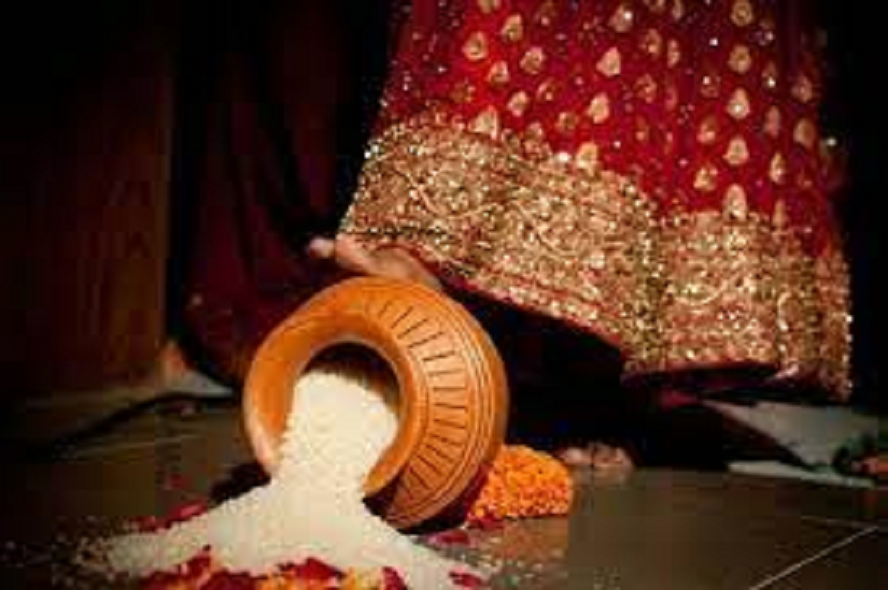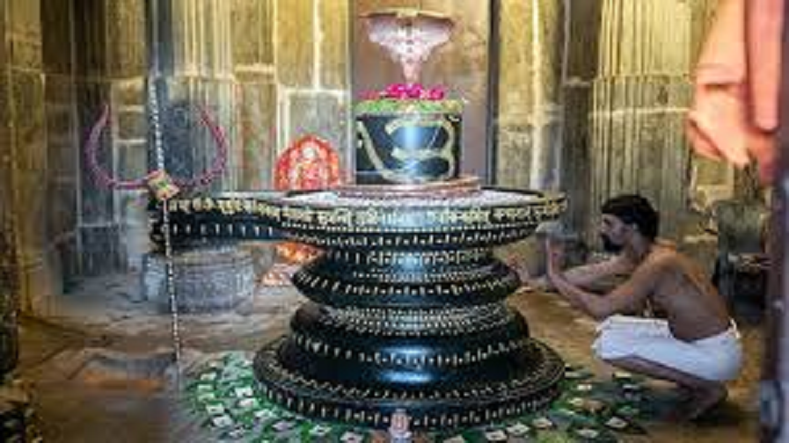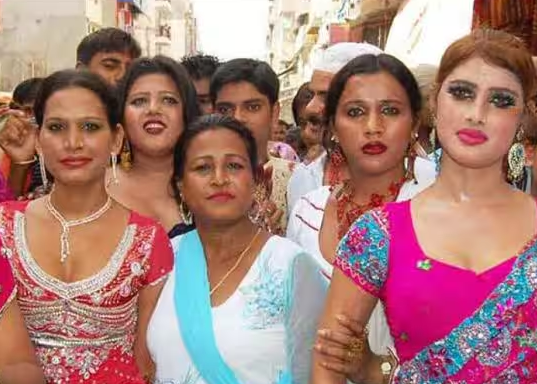Kalash Ritual: Why does the new bride push the Kalash with her feet during Griha Pravesh?
- bySherya
- 29 Jul, 2025

Kalash Ritual: When the new bride enters the house and pushes the Kalash filled with grains with her feet, what is the secret behind it? Know the cultural, religious and psychological significance of this tradition.

Kalash Ritual: When the new bride enters the house and pushes the Kalash filled with grains with her feet, it is not just a ritual but a scriptural symbol; she is entering prosperity, food, good fortune, and authority in the house in the form of Lakshmi. This action is a beautiful combination of Vedic tradition, cultural symbols and mental feelings.
The tradition associated with the Kalash in Grihapravesh is not just a ritual, but a symbolic form of the entry of Lakshmi
In Indian culture, the bride is considered 'Grihalakshmi'. Her entry into the house is considered like the arrival of Lakshmi. When she pushes the Kalash filled with rice or wheat with her right foot, it is a sign that she is bringing good luck, food and prosperity to the house.
Verse evidence:
Or Goddess Sarvabhuteshu Lakshmi as an institution.
Namastesyaye Namastesyaye Namastesyaye Namo Namah॥
(Meaning: Salutations to the goddess who is present in all living beings in the form of Lakshmi.)
Why is the Kalash filled with grains?
- Kalash is considered a symbol of the universe and completeness.
- Grains have been described as a symbol of Annapurna, life-energy, and inexhaustible wealth.
When the bride pushes the Kalash, she is channelling all these positive energies into the house. This is the philosophy, religious and mythological significance of this tradition. It is also a sign that –
I will fill this house with nourishment, good fortune and new energy.
Pushing with the foot, is it not a bad omen?
No! When the bride pushes the Kalash with her right foot, it is an auspicious entry. The right foot is placed first in auspicious and auspicious functions. It is a symbol of authority, reverence and gentleness, she is no longer just a guest, but the mistress of the house.
Grihapravesh and Lakshmi's footprints
When the bride's feet are colored with ochre or turmeric water and she enters the courtyard, her footprints are seen as the arrival of Lakshmi. The footprints and the kick of the urn...together complete the tradition of Grihapravesh.
Psychological and social messages
This tradition is a way to make the new bride comfortable and make her realize that this is now her own house. Pushing the urn symbolizes a respectful entry right .
Is this Vedic tradition? We also know from the evidence of texts
that in texts like Manu Smriti, Grihya Sutra, Brihat Samhita of Varahamihir, the traditions of Griha Pravesh, Lakshmi, Kalash and Pagchinh are mentioned. There is a verse in the mythological text... ' Griha Pravesh Lakshmi Pashyet Kalash Dhanyasamyutam' , it is considered auspicious to have a pot full of food and darshan of Goddess Lakshmi at the time of entry into the house.
Modernity vs Tradition, is it relevant?
This tradition is not superstition, it is cultural psychology. It shows the role of women in our homes, their acceptance of authority along with good fortune and dedication. Therefore, even today this tradition is a ritual that connects social sentiments, not just a convention.
When the new bride kicks a pot filled with grains at the time of entering the house, she brings to life an entire cultural system-
- she is lakshmi
- she is annapurna
- It is the gateway to prosperity
And most importantly, she is now the pivot of this clan. It is not just pushing the Kalash, it is a sacred act of ushering in new life, good fortune and authority into the family.
FAQ
Q1: Is it correct to carry the Kalash inside with hands?
A: Carrying it with hands is normal, but the tradition of pushing with feet signifies the entry of Lakshmi, so it has special importance.
Q2: Is this only a Hindu tradition?
A: This tradition is especially prevalent in Hindu weddings, but in some regions it has been culturally adopted by other communities as well.
Q3: Is any special grain used?
A: Mostly rice, wheat or coins are used, which symbolize eternal wealth and food.






